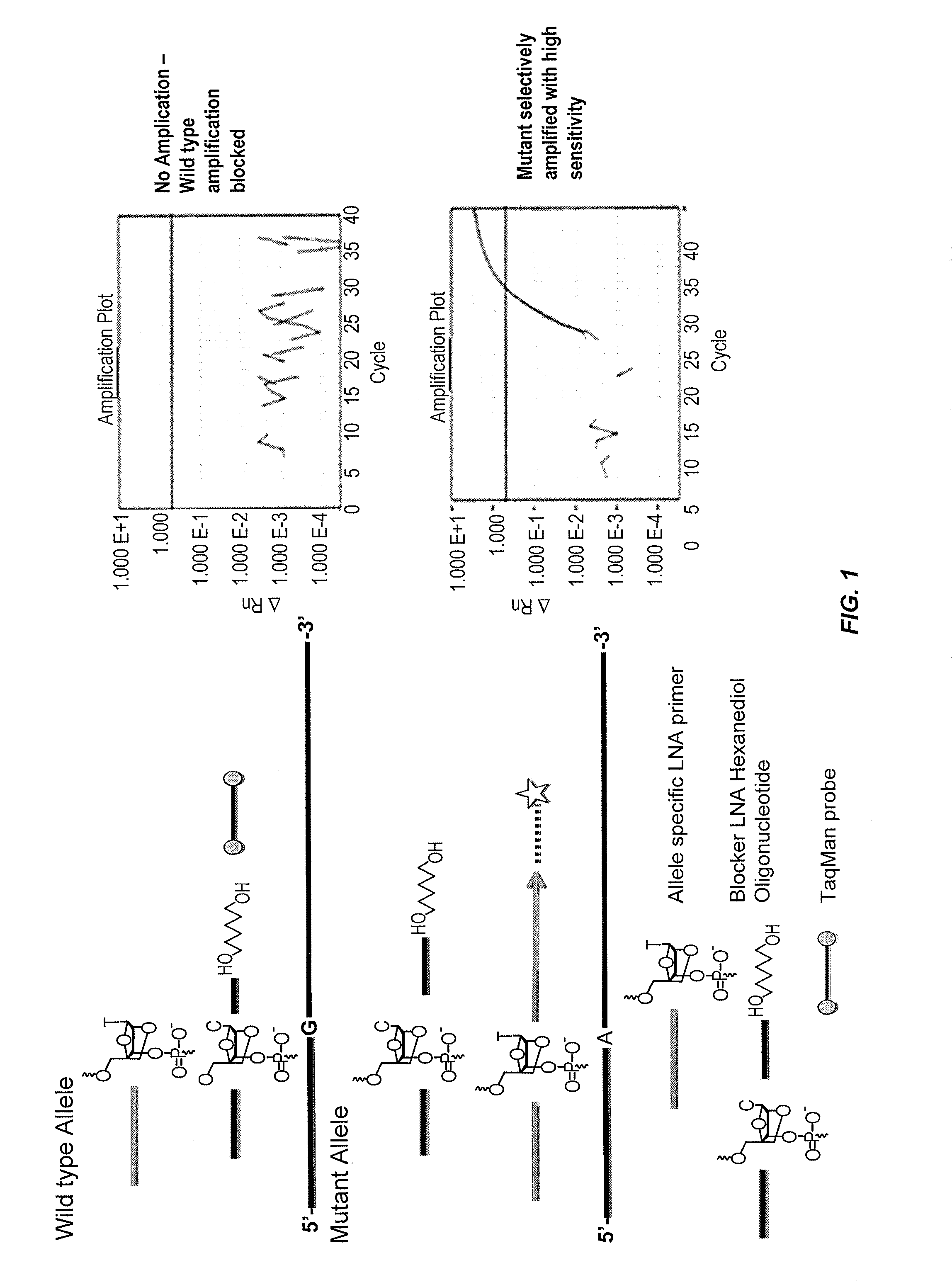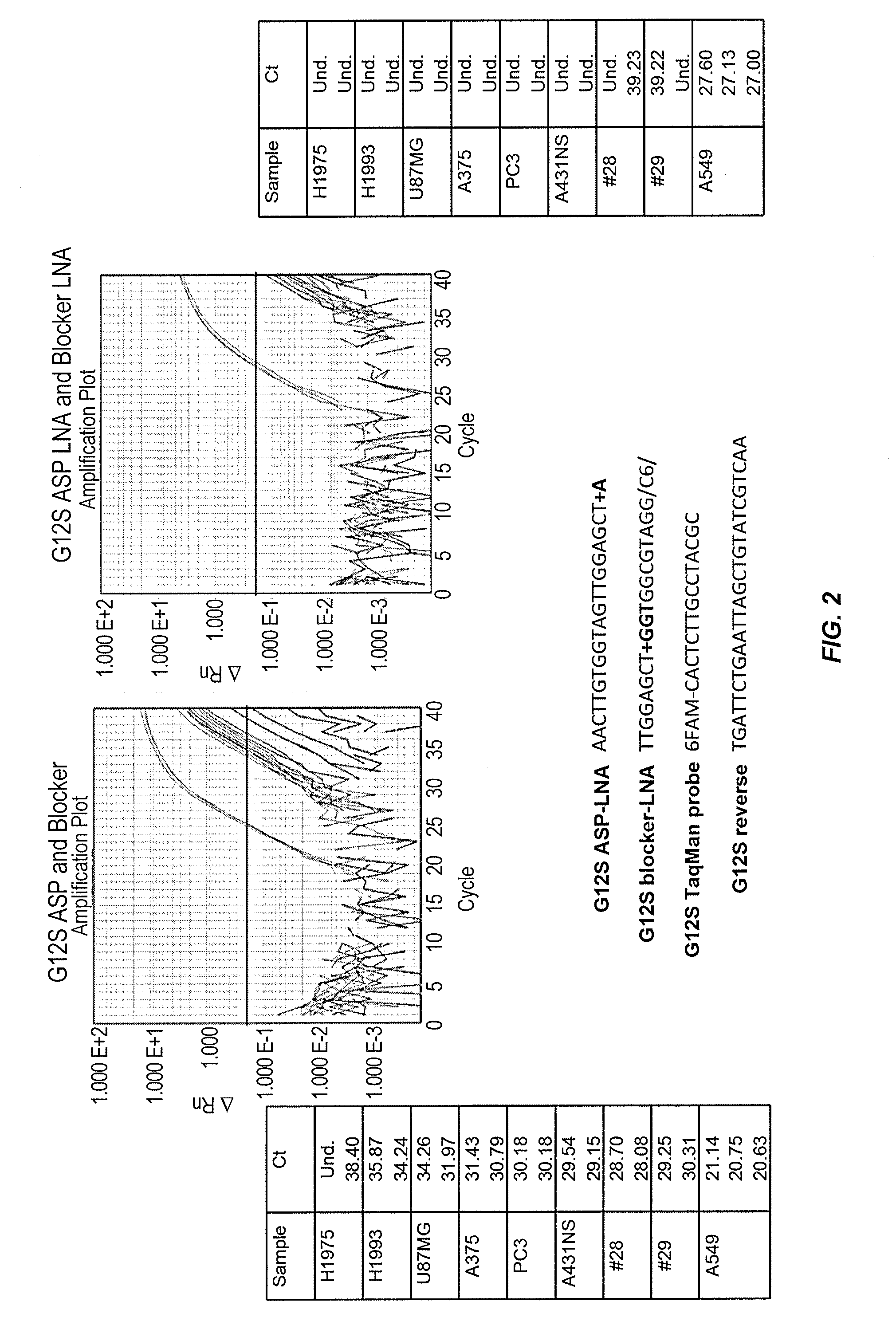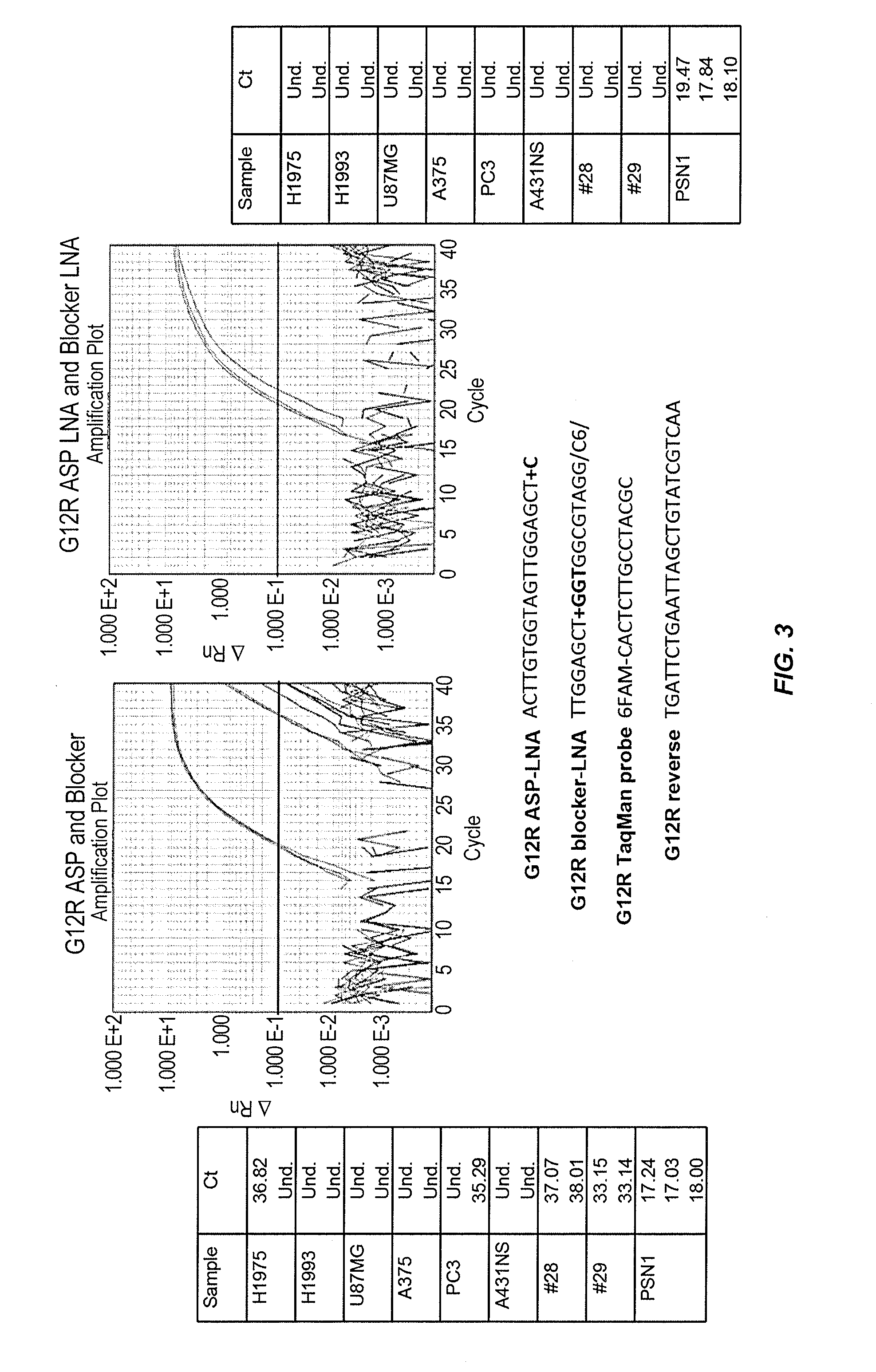Compositions and methods for detecting allelic variants
a technology of alleles and variants, applied in the field of compositions and methods for detecting alleles, can solve the problems of limited selectivity using this method, low detection efficiency, and inability to detect rare, so as to improve assay specificity and/or selectivity, increase the difference in tm, and reduce the efficiency of mismatch priming
- Summary
- Abstract
- Description
- Claims
- Application Information
AI Technical Summary
Benefits of technology
Problems solved by technology
Method used
Image
Examples
example 1
Somatic Mutation Genotyping Assay Methodology
[0294]FIG. 1 depicts one embodiment of the somatic mutation detection assays of the present invention. An allele-specific primer and an allele-specific blocker probe are used for each single nucleotide polymorphism (SNP) to be analyzed in a sample such as a blood or fine needle aspirate (FNA) sample. The allele-specific primer can comprise a locked nucleic acid (LNA) at the 3′-end that is specific for a variant (e.g., mutant) allele, whereas the allele-specific blocker probe can comprise a hexanediol blocker moiety at the 3′-end and a LNA at a position between about 5-15 nucleotides 5′ of the blocker moiety (e.g., in the middle of the oligonucleotide sequence) that is specific for the wild-type allele.
[0295]The assay methods of the present invention can be performed on an ABI 7900HT Real Time PCR Instrument, although any type of real time PCR instrument known to one of skill in the art can be used. Exemplary reaction conditions include th...
example 2
Exemplary Somatic Mutation Genotyping Assays for Detection of SNPs
[0297]This examples illustrates that the use of allele-specific primers and allele-specific blocker probes containing modified bases improves the discrimination of allelic variants.
[0298]In particular, FIG. 2 shows that the use of an allele-specific primer comprising a LNA modification at the 3′-end (“+A” in “G12S ASP-LNA”) and an allele-specific blocker probe comprising a LNA modification in the middle of the oligonucleotide sequence (“+G” in “G12S blocker-LNA”) and a 3′-hexanediol modification (“C6” in “G12S blocker-LNA”) improves the discrimination of allelic variants at the KRAS G12S polymorphic site. Allele-specific real time PCR performed using allele-specific primers and blocker probes without LNA modifications incorrectly detected the presence of the KRAS G12S mutant allele in all 8 of the cell lines negative for the mutant allele (i.e., H1975, H1993, U87MG, A375, PC3, A431NS, #28, and #29 cell lines). In cont...
example 3
Screening Colorectal Cancer Samples with Somatic Mutation Genotyping Assay Methodology
[0303]This examples illustrates the screening of colorectal cancer (CRC) tissue samples for the presence of the PIK3CA H1047R variant allele using the allele-specific primers and allele-specific blocker probes of the present invention containing modified bases including LNA modifications.
[0304]FIG. 9 shows that screening of 150 CRC tissue samples indicated that there was no interference observed from the negative samples and that detection of a weak signal can be validated by titration. The H1047R-positive samples #532 and #528 were validated by titration, while the H1047R-negative samples #94, #95, and #96 had undetectable levels of the H1047R variant allele at all concentrations tested.
[0305]In sum, this example demonstrates that the somatic mutation genotyping assays of the present invention are highly sensitive, very specific, highly selective, and robust and can be used to test clinical sample...
PUM
| Property | Measurement | Unit |
|---|---|---|
| Tm” | aaaaa | aaaaa |
| Tm | aaaaa | aaaaa |
| Tm | aaaaa | aaaaa |
Abstract
Description
Claims
Application Information
 Login to View More
Login to View More - R&D
- Intellectual Property
- Life Sciences
- Materials
- Tech Scout
- Unparalleled Data Quality
- Higher Quality Content
- 60% Fewer Hallucinations
Browse by: Latest US Patents, China's latest patents, Technical Efficacy Thesaurus, Application Domain, Technology Topic, Popular Technical Reports.
© 2025 PatSnap. All rights reserved.Legal|Privacy policy|Modern Slavery Act Transparency Statement|Sitemap|About US| Contact US: help@patsnap.com



